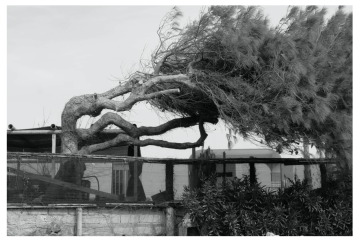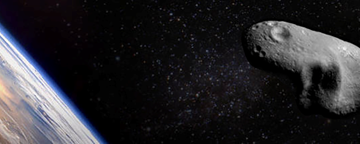Belonging to the World

Countless are the passages in Christian scripture which suggest that Christians ought not to regard this world as their true home. Cultivating a sense of belonging to the world has almost never been an explicit goal of classical Christian teaching. Christians are not alone in this regard. A variety of traditions including Hinduism, Jainism, and strands of Buddhism have as their goal the escape from the cycle of worldly birth and rebirth not least because the cycle of rebirth is also, of course, a cycle of re-death. For every birth, a death, and so on ad infinitum.
But learning to belong to the world and care for it is not just a problem for religious folk. Consider the escapist projects of the techbro billionaires in their quest to leave behind the worldly processes of living and dying—indeed, to leave behind living in the world—for what philosopher Mary-Jane Rubenstein calls their off-world “astrotopias.” Apparently, nonreligious persons too need worldviews that empower attention to this world and commitment to ecological repair.
In an age of climate crisis and ecological peril, in an all-hands-on-deck situation, we need religious and secular ways of imagining the world as our true home, a home worthy even of our self-sacrificial care. The time is long past to put an end to our escapist fantasies, be they religious or secular.
This work of explicitly reimagining religious traditions for the sake of Earth-care has been underway for nearly sixty years now. I’ve marked that time frame because of two books which inaugurated the religious and philosophical work of attending to the ecological crisis and the human role in producing that crisis. These two are Muslim philosopher Seyyed Hossein Nasr’s Man and Nature: The Spiritual Crisis of Modern Man (1968) and Christian process theologian John Cobb’s, Is it Too Late? A Theology of Ecology (1972). Religiously inflected ecological awareness was already afoot at the beginning of the twentieth century in the work of Alfred North Whitehead and Mohandas Gandhi. But Nasr and Cobb were among the first to name the climate crisis as a spiritual crisis and begin the intellectual effort to remedy that crisis.
Nasr put it memorably: “it is not so easy to see that the blight wrought upon the environment is in reality an externalization of the destitution of the inner state of the soul of that humanity whose actions are responsible for the ecological crisis.”
Sixty years or even a hundred and twenty are but a twinkle of an eye in human history. The work that remains is massive. One key component of that work must be the new stories about who human beings are—stories that tell us that we belong to the Earth and stories that counter longstanding tales that imagine human beings as resident aliens or wayfarers on the road to our true home.
But that particular kind of story work will have little traction if the object of our longing—especially religious notions of the time or place that is longed for—is imagined to be elsewhere. Why tell us that we belong to the Earth if God or Brahman or nirvana is not there? If they are elsewhere, our hearts would be pulled in different directions, towards Earth and towards God’s love (elsewhere). This, after all, has been the object of traditional religious teaching—to cultivate a love for the imperishable elsewhere rather than the perishable here and now.
How to resolve the pull of two loves? Is it possible to resolve it without undercutting the basic beliefs of a given religious tradition? One noteworthy experiment in such reimagination is the work of Christian ecotheologian, Sallie McFague. McFague cultivates a sense of belonging to the world through careful attention to the power of metaphor, offering a wide range of new possibilities: “God as lover, mother and friend of the world.” She then explores how employing those metaphors might reframe religious imagination at a larger scale. To accomplish that move to a larger scale, McFague elaborates these metaphors into well-developed “models.” The goal is to take a given metaphor and develop it into an extensive and elaborated lens through which human relations to the world and to God might be worked out.
Among the many metaphors she commends and then develops into a full-scale model, one stands out as particularly promising for ecological theology, namely the world as “body of God.” The promise of this particular metaphor is considerable, not least for resolving the two-direction pull between love of the world and love of God. And she develops this model without collapsing the two into an undifferentiated monism. If the world is God’s body, then learning to see this world as our true home need not come at the expense of seeking God (who is presumably elsewhere). Because the world is God’s body, caring for it and being at home in it is also to move into ever deeper intimacy with the divine life.
A central contribution of this “body-of-God” metaphor is that it builds on and vastly expands the Christian discourse about incarnation. On the McFague model, incarnation happens not just in the single body of Jesus; instead, the world itself is also the incarnation of God. And as a body, all parts are intimately and inseparably related to all other parts. What affects one, affects all. Within this model, indifference to the fate of the world, to the fate of other species of plants and animals, to earth and to air, is both illogical and self-destructive. But more, it would also amount to a spiritual violation. Despoiling the Earth is also a despoilation of the body of God.
Much more could be said about the power of this model and its limitations (as every model has them). What matters most, however, is to recognize that we need to embrace the work of restorying the world for the work of restoring the world to ecological health and to recognize that work as a spiritual obligation. We are unlikely to care for the world so long as our core metaphors, models, and worldviews continue to imagine the world as a waystation rather than as our true and only home.
Space does not permit a comparable exploration of secular restorying. But one noteworthy scientific story does come to mind, namely the Gaia theory as developed first by James Lovelock and then by Lynn Margulis and their many disciples. Like McFague’s project but now in a secular register, Gaia theorists invite readers to understand the Earth as a single unified living system—a living system because life, in particular microbial life, has reshaped the planet into a habitable home for life itself. Each creature is part of a single organic whole to which it inseparably belongs.
While the founders of Gaia theory understood themselves as advancing a scientific hypothesis to be sustained by empirical evidence, subsequent generations of scientists and philosophers intuit spiritual possibilities within Lovelock’s and Margulis’ work. Indeed, in a co-authored essay, Margulis and her son Dorian Sagan write,
The Gaian blending of organisms and environment into one, wherein the atmosphere is an extension of the biosphere, is a modem rationalist formulation of an ancient intuitive sentiment. One implication is that there may be a strong biogeological precedent for the time-honored political and mystical goal of peaceful coexistence and world unity.
A secular and scientific mysticism that advances “peaceful coexistence and world unity” is also a worthy way of cultivating world-belonging. Even a secular Mother Gaia is worthy of our love, loyalty, and care.
#
John Thatamanil is Professor of Theology and World Religions at Union Theological Seminary. He is also Volunteer Priest Associate at the Anglican Church of St. John the Divine in Victoria, BC, and Theologian to the Diocese of Islands and Inlets. He is the author of Circling the Elephant: A Comparative Theology of Religious Diversity.
Counterpoint blogs may be reprinted with the following acknowledgement: “This article was published by Counterpoint: Navigating Knowledge on 07 June 2024.”
The views and opinions expressed on this website, in its publications, and in comments made in response to the site and publications are those of the author(s) and do not necessarily reflect the views and opinions of Counterpoint: Navigating Knowledge, its founders, its staff, or any agent or institution affiliated with it, nor those of the institution(s) with which the author is affiliated. Counterpoint exists to promote vigorous debate within and across knowledge systems and therefore publishes a wide variety of views and opinions in the interests of open conversation and dialogue.
Photo Credit: Pixabay



